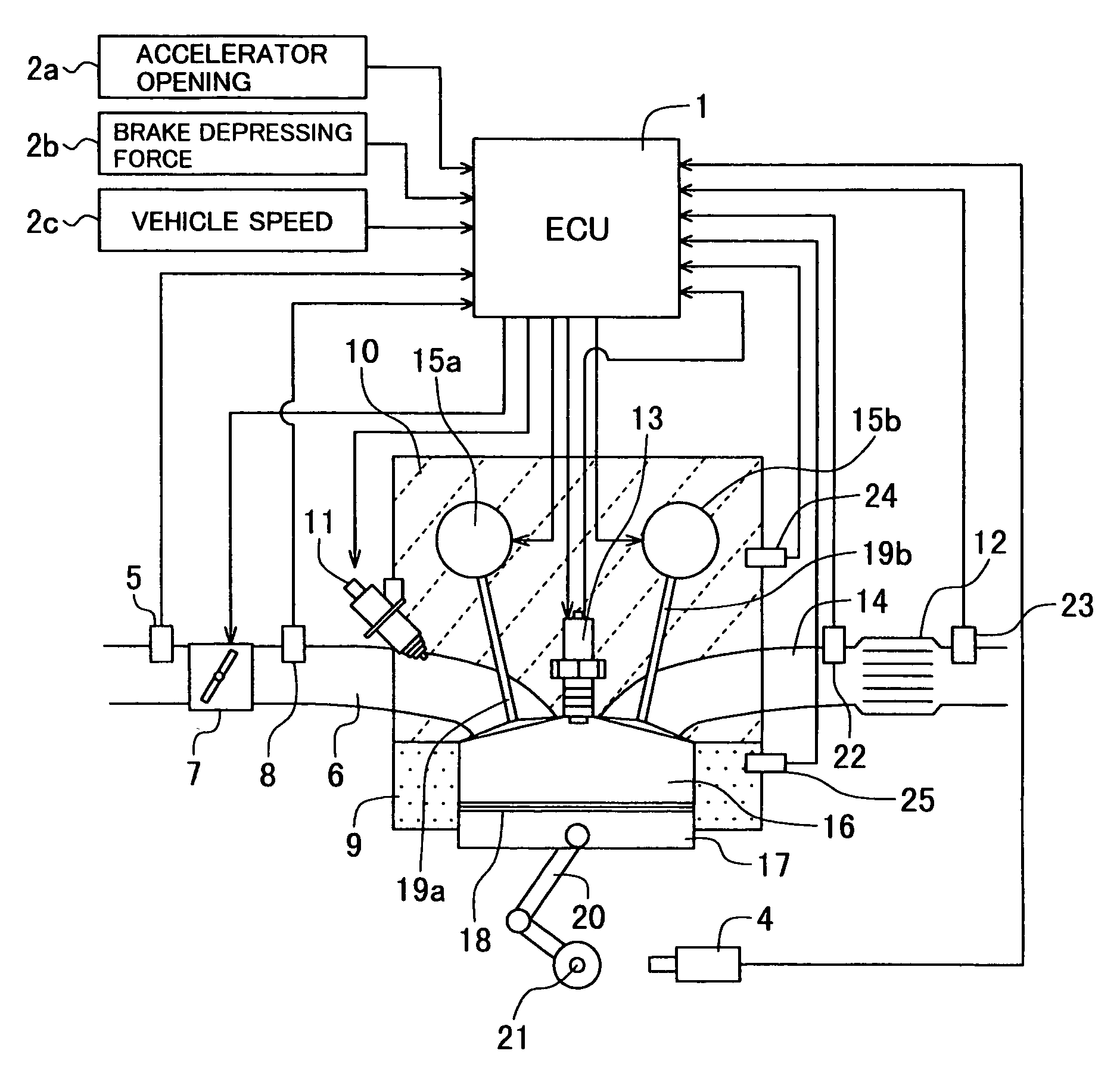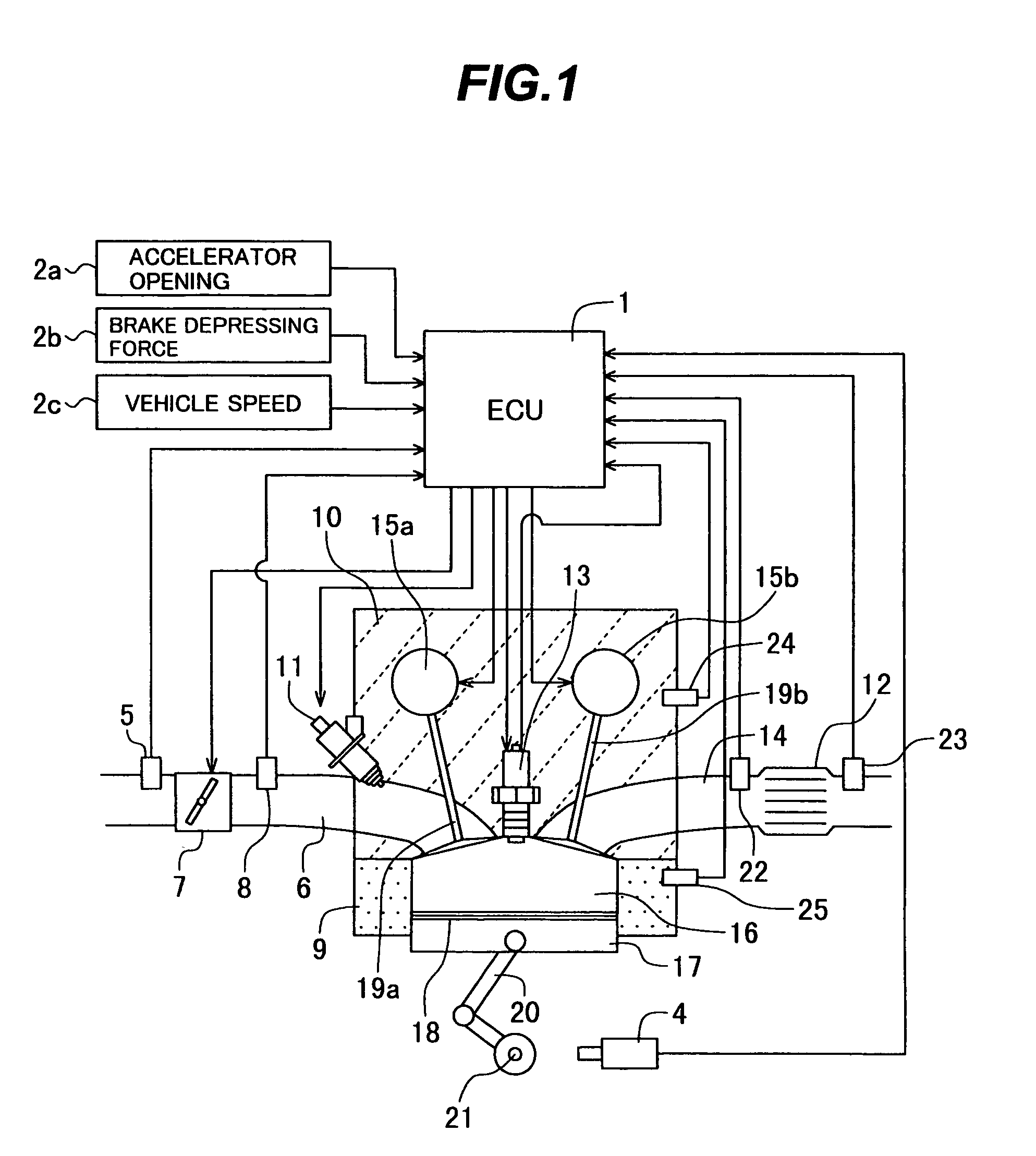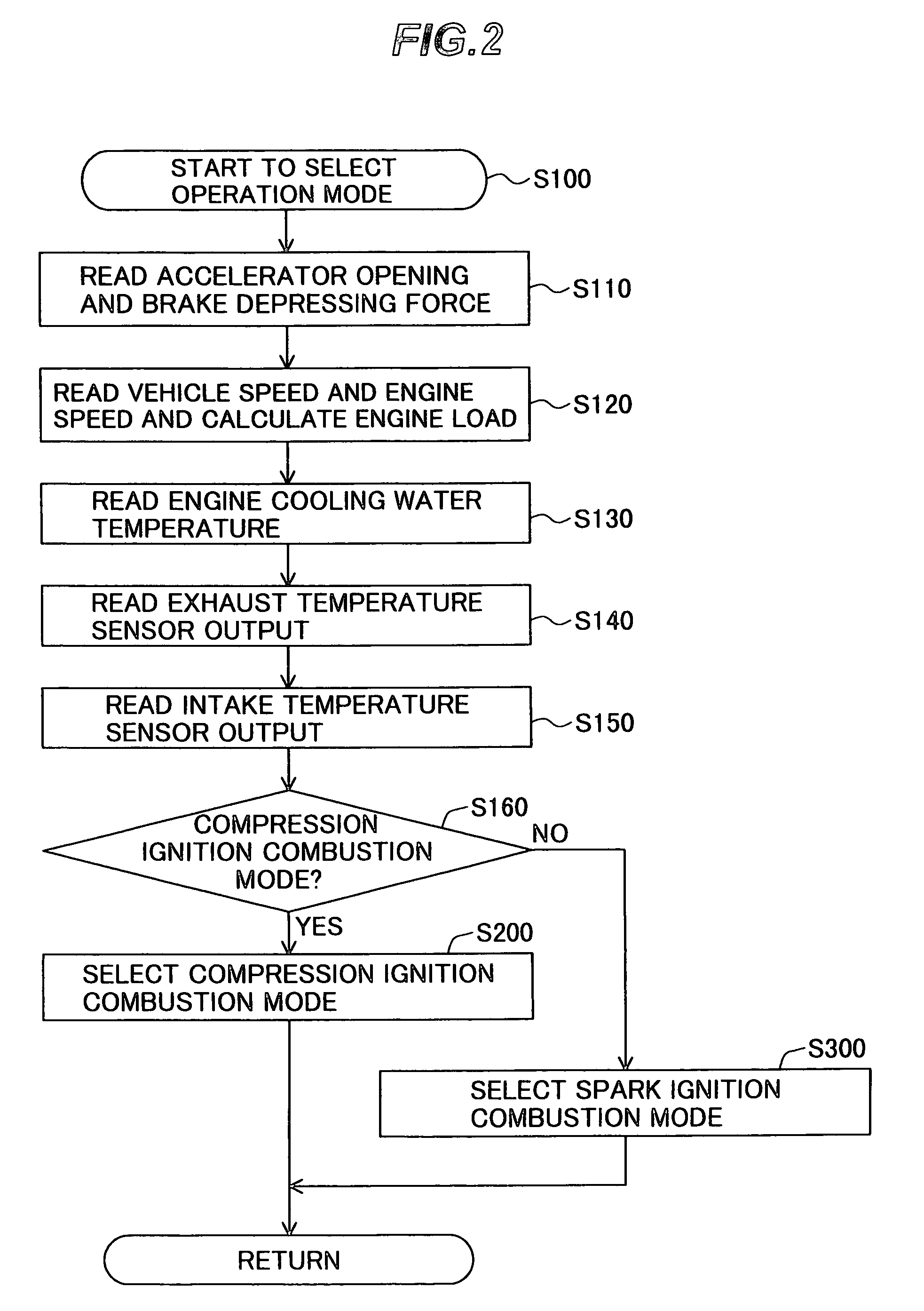Compression ignition internal combustion engine
a technology of compression ignition and internal combustion engine, which is applied in the direction of machines/engines, electrical control, output power, etc., can solve the problems of narrow operation area of self-ignition and difficulty in stable driving of vehicles
- Summary
- Abstract
- Description
- Claims
- Application Information
AI Technical Summary
Benefits of technology
Problems solved by technology
Method used
Image
Examples
first embodiment
[0050]With reference now to FIG. 1 to FIG. 14, a configuration and operation of a compression ignition internal combustion engine according to the present invention will be explained below.
[0051]First, a configuration of the compression ignition internal combustion engine according to the first embodiment will be explained by using FIG. 1.
[0052]FIG. 1 is a system block diagram showing the configuration of the compression ignition internal combustion engine according to the first embodiment of the present invention.
[0053]The compression ignition internal combustion engine according to the embodiment can operate by switching between a spark ignition combustion using an ignition device and a compression ignition combustion self-igniting a fuel-air mixture by piston compression.
[0054]A combustion chamber 16 is formed in a space enclosed by a cylinder block 9, a piston 17 and a cylinder head 10. Reciprocating motion of the piston 17 is transmitted to a crank shaft 21 through a connecting...
second embodiment
[0179]Then, with reference now to FIG. 15 to FIG. 23, a configuration and operation of a compression ignition internal combustion engine according to the present invention will be explained below.
[0180]The configuration of the compression ignition internal combustion engine according to the embodiment is the same as that shown in FIG. 6. The embodiment changes control over the throttle valve and the variable valve mechanisms according to the operating condition of the engine in the compression ignition combustion mode.
[0181]First, the method of controlling the compression ignition combustion mode of the compression ignition internal combustion engine according to the embodiment in a low-speed, low-load state will be explained by using FIG. 15 to FIG. 17.
[0182]FIG. 15 is a flow chart showing the contents of control in the compression ignition combustion mode in a low-speed, low-load state of the compression ignition internal combustion engine according to the second embodiment of the...
third embodiment
[0221]Then, with reference now to FIG. 24 to FIG. 27, a configuration and operation of a compression ignition internal combustion engine according to the present invention will be explained below.
[0222]The configuration of the compression ignition internal combustion engine according to the embodiment is the same as that shown in FIG. 6. The embodiment switches between a compression ignition combustion mode and a spark ignition combustion mode according to the engine speed and engine load.
[0223]FIG. 24 is a flow chart showing the contents of control of switching between a compression ignition combustion mode and a spark ignition combustion mode of a compression ignition internal combustion engine according to a third embodiment of the present invention. Furthermore, FIG. 25 and FIG. 26 illustrate control of switching between a compression ignition combustion mode and a spark ignition combustion mode of the compression ignition internal combustion engine according to the third embodi...
PUM
 Login to View More
Login to View More Abstract
Description
Claims
Application Information
 Login to View More
Login to View More - R&D Engineer
- R&D Manager
- IP Professional
- Industry Leading Data Capabilities
- Powerful AI technology
- Patent DNA Extraction
Browse by: Latest US Patents, China's latest patents, Technical Efficacy Thesaurus, Application Domain, Technology Topic, Popular Technical Reports.
© 2024 PatSnap. All rights reserved.Legal|Privacy policy|Modern Slavery Act Transparency Statement|Sitemap|About US| Contact US: help@patsnap.com










